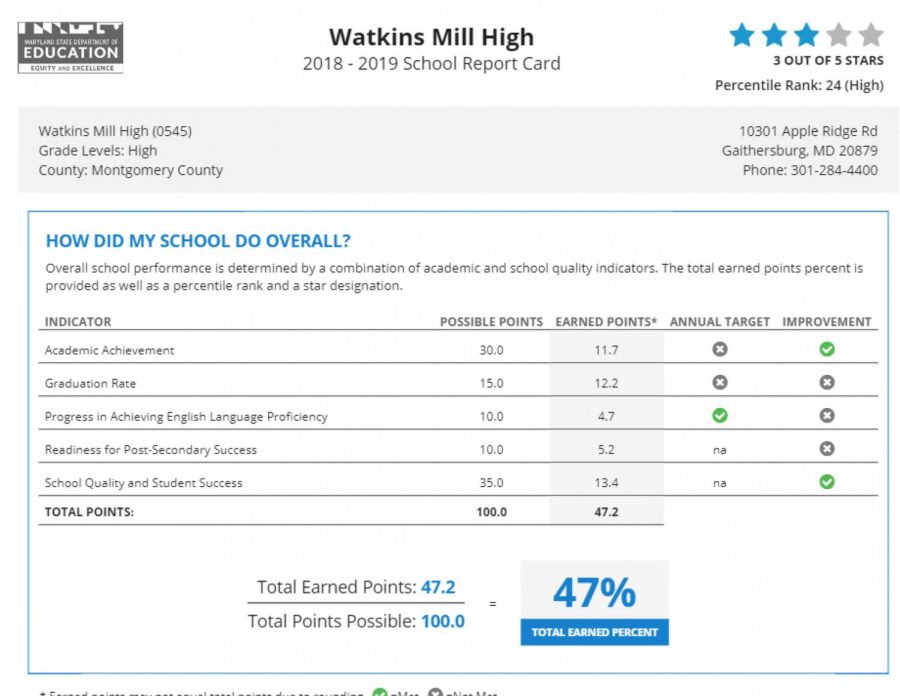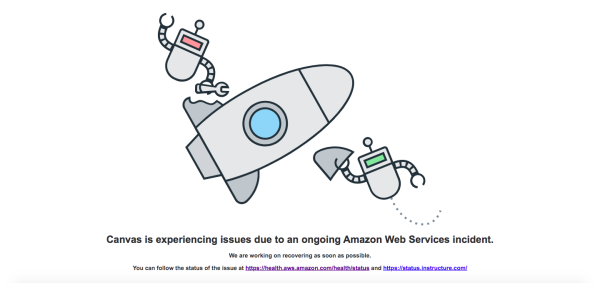MSDE Report Card gives WMHS 3 stars, but ignores certain factors
Courtesy of the Maryland State Department of Education
Watkins Mill High School received a three star rating on the Maryland State Report Card, but there are other factors that the report card does not address.
Each year, the Maryland State Department of Education releases a report card in which each school receives a composite score based on factors such as graduation rate, English and math state test scores, attendance, and responses from the Maryland School Survey.
According to the 2018-2019 report card, Watkins Mill High School earned a three out of five-star rating, receiving a total score of 47 percent. “The report card is just a snapshot of what we do,” staff development teacher Kerrin Torres-Meriwether said. “These scores don’t define us. No score defines anyone, but it’s good data to look at.”
This year, the report card suggests that math testing scores are considered to be an area of improvement, meanwhile English scores are making strides. “We’ve made some great improvement in literacy,” principal Carol Goddard said. “We need to improve our graduation rate and some of the perceptions that kids might have about their abilities. They need to have an open mind to their education.”
Responses from the Maryland School Survey from students and staff are also taken into account. “If kids are answering [the survey] in a way that [is] factual, it would help [our school]. It’s valuable information for the school. But if [the information provided on the survey] isn’t true, then how do we fix that?” Goddard said.
There are several elements that the report card does not include. “We have students [that have] food insecurities, which means they don’t have meals, [or] they don’t know where the next [meal] is coming from. Or they have unstable housing information, one month [they] may have an apartment and the next month [they] might be homeless,” Torres-Meriwether said. All of these can be contributing factors to students’ performance and attendance.
“We have resources here to help those families. We have to meet the basic needs of our students, [such as] food and shelter before they can even come into the classroom and learn,” Torres-Meriwether added. “We’re doing all of that. We’re doing all of those things, so that is definitely not reflected in the report card.”
Since the 2017-2018 report card, Watkins Mill has initiated and continued numerous programs to help students who are either learning English as a second language or students that have enrolled and aren’t able to graduate within the four years as the state requires.
“We have METS, ESOL, we have kids with IEPS, we’ve got autistic resources,” Goddard added. If a kid comes to us from Central America, and they’re new to the United States, they’ve got to go to school until they’re 21. So if they come and they’re already 19 years old, and they have no credits, we still have to enroll them. And if they’re 19, they’re not even going to be able to graduate, but we still have to enroll them. That’s the reason why we would want to get them into a program to read and write and teach them a skill.”
However, one can argue that the report card fails to consider school populations that have a majority of low-income families who can benefit from these programs, such as Watkins Mill. “I believe this is a fabulous school and our kids go off to college and do wonderful things, but the perceptions are skewed,” Goddard said.
Your donation will support the student journalists of Watkins Mill High School. Your contribution will allow us to purchase equipment and cover our annual website hosting costs.

Amelia is a senior at Watkins Mill High School and an Associate Editor for The Current. She’s on Watkins Mill's varsity track and field team and has...







